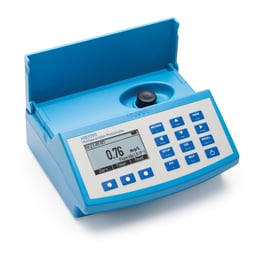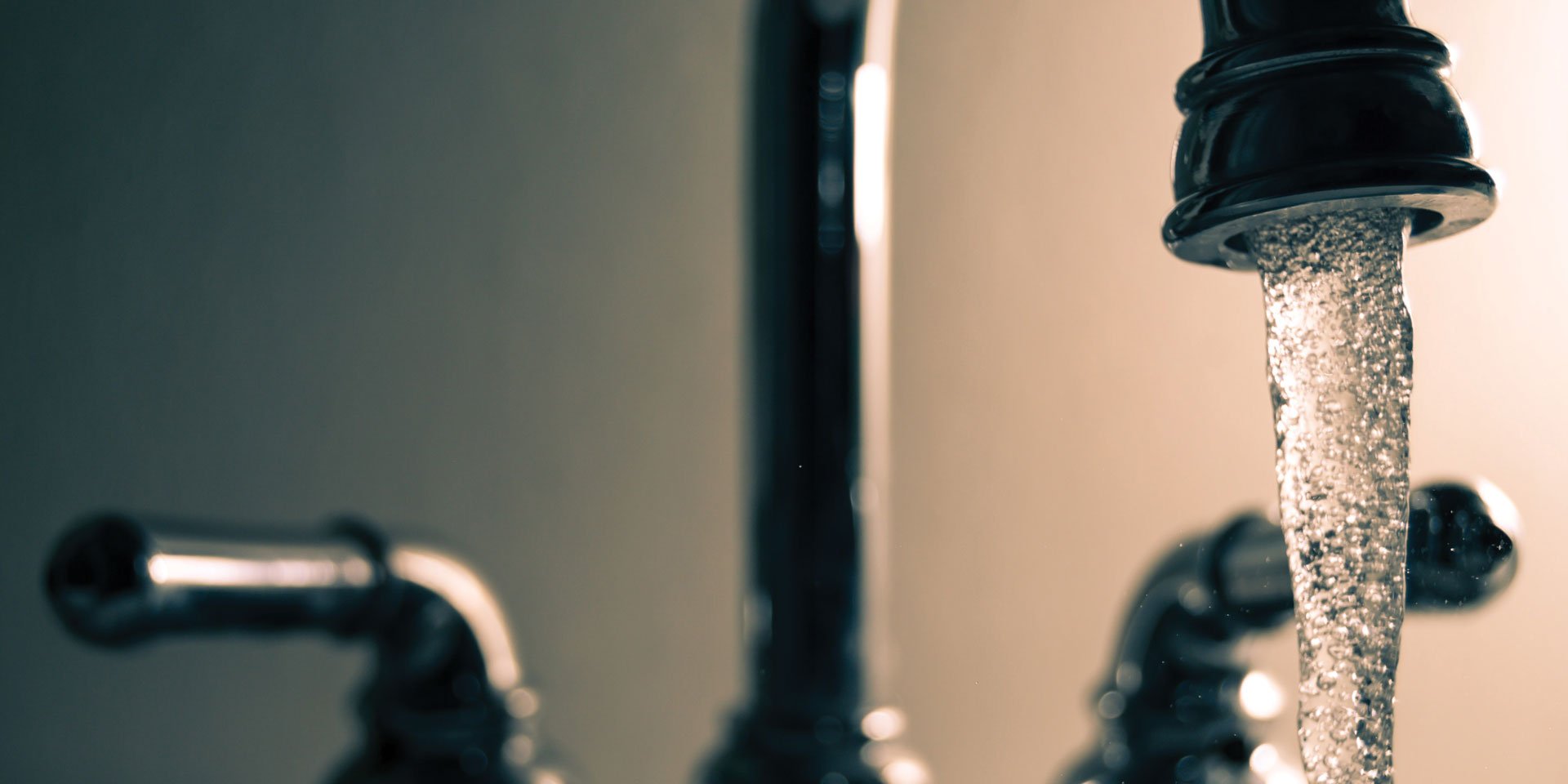 Fluoride has become a trending topic in newsfeeds everywhere. Some people are for fluoride products, others are against them. But, where does fluoride come from and how much is actually there in your drinking water? How is it introduced? Why is it so important? Read on!
Fluoride has become a trending topic in newsfeeds everywhere. Some people are for fluoride products, others are against them. But, where does fluoride come from and how much is actually there in your drinking water? How is it introduced? Why is it so important? Read on!
Natural Fluoride Sources
Many people know that fluoride is an optional additive to drinking water, but did you know that it also can occur naturally? Fluoride (in trace levels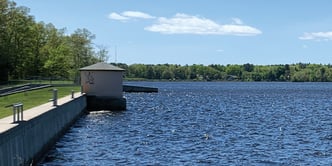 ) is found in natural water sources. Fluorine combines with the minerals found in rocks and soil to form salts. Once these salts come into contact with moisture they dissolve and dissociate. This means that the fluoride breaks off from the salt and becomes charged fluoride ions. Since there is fluoride already present in water, then why do some communities add it to their drinking water? The answer: the levels of fluoride that naturally occur are at such trace levels that they do not help to prevent tooth decay.
) is found in natural water sources. Fluorine combines with the minerals found in rocks and soil to form salts. Once these salts come into contact with moisture they dissolve and dissociate. This means that the fluoride breaks off from the salt and becomes charged fluoride ions. Since there is fluoride already present in water, then why do some communities add it to their drinking water? The answer: the levels of fluoride that naturally occur are at such trace levels that they do not help to prevent tooth decay.
The Why
Fluoridation of community water is considered to be one of the top ten public health achievements of the 20th century. Early in the 20th century, scientists and dentists noticed that children that grew up in areas with higher levels of naturally occurring fluoride had significantly fewer incidences of tooth decay. They found that fluoride can reduce cavities and demineralization of teeth, and can sometimes re-mineralize teeth. Therefore, strengthening the teeth (especially in young children). After in-depth study, an optimal level of fluoride was found. Starting in 1945, cities across the United States have been adopting this practice. This has ultimately resulted in cost savings to families and health care providers as there were fewer cases of teeth degradation.
How Much is There Really?
During the drinking water process, a fluoride containing chemical compound is added to the effluent. These chemical compounds include things such as sodium fluorosilicate, fluorosilic acid, or sodium fluoride. The effluent is what goes out of the drinking water plant to businesses, homes, etc. Additions of fluoride to drinking water are strictly regulated by the EPA. Fluoride falls under the primary and secondary water standards lists. Up to 4 mg/L of fluoride can be in drinking water, but the EPA recommends that the actual level of fluoride be less than 2 ppm. The aim for most water facilities is to have ~ 1.0 mg/L of fluoride coming out of your tap.
Why is it so Closely Regulated?
There is too much of a good thing, it doesn’t matter if you are referring to chocolate cake or fluoride, there are consequences. If fluoride levels exceed the EPA Primary Standard MCL (maximum contaminant level) of 4 mg/L people are susceptible to something called skeletal fluorosis. Skeletal fluorosis is a bone disease where fluoride binds up with the calcium in bones and forms a precipitate. The calcium is then leached from the bones. A less severe impact occurs above the EPA Secondary Standard MCL of 2 mg/L. Fluoride at that level typically results in cosmetic effects such as mottled and/or discolored teeth.
When are Fluoride Levels Monitored?
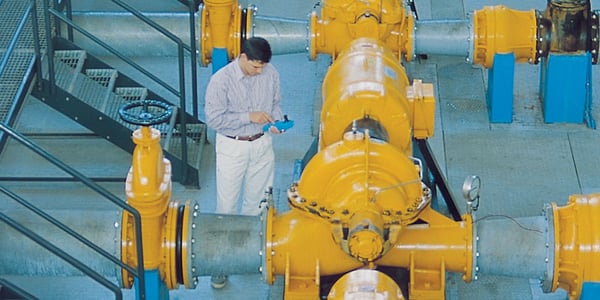 Fluoride is measured in the source water (intake water), especially if the source water has naturally occurring fluoride in it. Thenatural level of fluoride can fluctuate depending on seasons, weather pattern, and land use. The fluoride levels in the influent will influence the needed fluoridation on the effluent water (also known as finished water).
Fluoride is measured in the source water (intake water), especially if the source water has naturally occurring fluoride in it. Thenatural level of fluoride can fluctuate depending on seasons, weather pattern, and land use. The fluoride levels in the influent will influence the needed fluoridation on the effluent water (also known as finished water).
How to Measure Fluoride
There are two main ways easily to measure fluoride (without large instrumentation): colorimetrically and potentiometrically. Colorimetry depends on the exact mixing of reagent with your sample to form a colored compound. The intensity of the color corresponds with the concentration of your analyte (fluoride) in your sample. The potentiometric method involves direct measurement of the sample using an ion selective electrode (ISE) with a meter. Each have their own advantages.
Colorimetric Methods
Colorimetric methods that incorporate the use of a photometer or spectrophotometer are more accurate than standard test kits as the color is read by an instrument versus the human eye. Photometers and colorimeters measure the absorbance of the  color at a specificwavelength using either colored filters or an LED bulb that emits light at a specific wavelength. It removes the subjectivity variable.
color at a specificwavelength using either colored filters or an LED bulb that emits light at a specific wavelength. It removes the subjectivity variable.
Now, not all photometers, colorimeters, or spectrophotometers are equal. Questions to ask are, “How accurate do I need to be?” And “Am I spot checking, or do I need these numbers for reporting purposes?”. The answers to these two questions can help you to determine what type of instrumentation you may need. For spot checks, our HI729 Low Range Fluoride Colorimeter - Checker® HC would be perfect. Small, pocket-sized, and dedicated to a single parameter it is great for a quick test. Keep in mind, if you need to report your fluoride numbers you will need a higher degree of accuracy, and potentially, resolution. A step up for a meter that is still portable is the HI96729 Fluoride Low Range Portable Photometer. It not only is able to be verified and calibrated with NIST traceable standards, it also records basic GLP (Good Lab Practices) data. After that, you would move up to the benchtop meters. A benchtop photometer such as the HI83399 Water & Wastewater Multiparameter (with COD) Photometer and pH meter or the benchtop HI801 iris visible spectrophotometer would be great additions to any laboratory setting.
Potentiometric Methods
Potentiometric methods for measuring fluoride are very exact and accurate, but take a few more steps. For 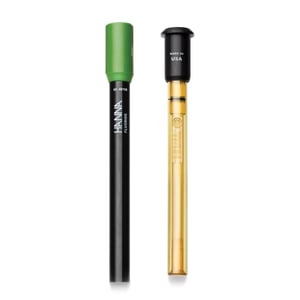 direct measurement of fluoride in water samples we tend to recommend the HI4010 Fluoride ISE (half-cell) paired with the HI5315 Reference Electrode. While there are combination electrodes that combine both the sensing and reference electrode into one probe, you achieve more stable fluoride readings with the half-cell.
direct measurement of fluoride in water samples we tend to recommend the HI4010 Fluoride ISE (half-cell) paired with the HI5315 Reference Electrode. While there are combination electrodes that combine both the sensing and reference electrode into one probe, you achieve more stable fluoride readings with the half-cell.
This is due to the fact that even after treatment, the levels of fluoride being tested are very low. Using the half-cell probe helps to guarantee accurate and repeatable results. A portable meter where you can take laboratory accuracy with you where-ever you go is the HI98191 Waterproof Portable pH/ORP/ISEMeter. For a laboratory option, the HI5222 Laboratory Research Grade Two Channel Benchtop pH/mV/ISE Meter ensures confidence in measurements with the exclusive Hanna Instruments CAL Check™ feature that alerts the user to potential problems during calibration.
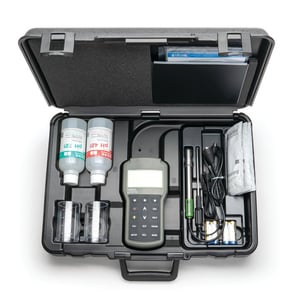 One thing that you will need with a fluoride ISE is ISA, also called Ionic Strength Adjuster. This reagent adjusts the ionic strength of the sample - it aids in accurate measurement by standardizing the ion activity of the sample. ISA must be added to both the standards for calibration and to the sample in exact ratios. Some ISAs, such as the ones for fluoride measurement also have some other functions. Fluoride ISA also adjusts the pH of the standard or sample to the optimal levels for measurement. It also helps to negate interfering ions by complexing specific metals such as aluminum Al3+ or iron Fe3+.
One thing that you will need with a fluoride ISE is ISA, also called Ionic Strength Adjuster. This reagent adjusts the ionic strength of the sample - it aids in accurate measurement by standardizing the ion activity of the sample. ISA must be added to both the standards for calibration and to the sample in exact ratios. Some ISAs, such as the ones for fluoride measurement also have some other functions. Fluoride ISA also adjusts the pH of the standard or sample to the optimal levels for measurement. It also helps to negate interfering ions by complexing specific metals such as aluminum Al3+ or iron Fe3+.
As mentioned before, ISA needs to be added in an exact ratio, otherwise your readings will be off-kilter; with TISAB II, 50 mL of ISA is added to 50 mL sample or standard while with TISAB III, 5 mL of ISA is added to 50 mL sample or standard. To achieve exact volumes, calibrated volumetric class A glassware should be used. This will help to guarantee that the volumes you measure out are accurate.
Fluoride has it's uses...
And so does fluoride testing! We can help you with any questions you may have, and help you every step of the way with your testing needs.
We want to hear from you! Ask us your questions, any of our sales specialists would be happy to talk with you.
Allison graduated from Bryant University with a Master’s Degree in Global Environmental Studies. She is passionate about nature, and how science is connected to the world around us. At Hanna, she provides an array of content and support to customers through the Hanna Blog, SOPs, and Data Sets.
Allison may be reached at ahubbard@hannainst.com.

